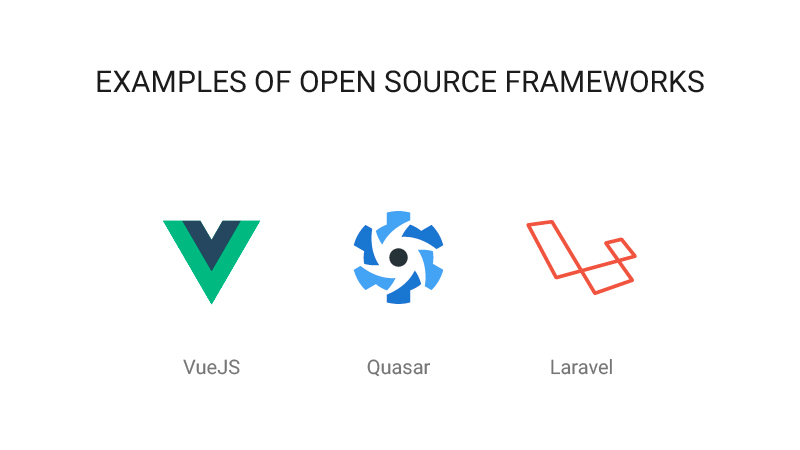What are the advantages of open-source software for companies?
The reasons to adopt and support community-driven technologies
By Niccolò Maria Menozzi
Open source or in-house Frameworks? Let’s see how companies can benefit from independent, completely accessible technologies that are supported by the skills of an international collective.
Before you start reading, do you already know what is a framework? If you want to brush up, read the article.
In the past, many companies have developed their own software with in-house frameworks. Back then as well as today, the alternative is adopting licensed third-party technologies.
These options allow those who adopt them to feel safer (more guarantees, stability, continuity…), but they are not without their downsides. In the face of new advancing methods, these technologies show their age and are limited by the business models of the distributors.
Maintenance and update of in-house software is expensive and can take the company IT department a lot of time while the goals of the supplier companies are not always in line with the Client’s needs. Fortunately there are other options, aligned with the modern approach.
The open source web frameworks offer an alternative that shifts the company focus from the centralisation of resources – which has become of little significance – to the adoption of more internationally widespread technologies. The technological exclusive and the supposed guarantees of a private supplier are exchanged for a transparent shared standard. This choice opens up to quite a few advantages which make the development processes more flexible, especially, as in our case, on the web.
The value of technology ownership has diminished
In the past technology ownership guaranteed a competitive edge over the competition and money could also be made from licensing. The source code of the software in question was a company secret to be protected.
With the growth of the web and the spread of technologies to support the online services, the IT sector has experienced the formation of a very fragmented situation.
In this scenario the big digital service companies have played an important role, at times determining with their economic weight the growth of some of these technologies and the consequent decline of others. New international standards have been set.
At the same time, many cases of successful open source frameworks have emerged which have ridden the wave of the community-driven technologies, i.e. developed and maintained by international teams of independent developers.
The source code of this software is not secret in any way and any part it is composed of is accessible, encouraging ethical transparency and 360° customisation.
In light of the success obtained by these frameworks, today privatising the technologies on which to base their services and products means companies run the risk of reinventing the wheel, rather than concentrating on activities that create solid value. A similar argument could be made for companies that have old assets, spending energy on maintaining obsolete solutions that are going out of use rather than preparing for the migration to modern methodologies.
Compared to open source frameworks the owned ones are more expensive and risk becoming outdated more quickly in a world in constant evolution.
If you want to learn more about web technologies managed by independent developers have a look at the difference between community and company-driven frameworks.
The advantages of open source for companies
Every developer is essential and their time is precious. Why use their energies on tasks that could be performed by open source developers?
Imagine having a shared technological base that is regularly improved by many users that use it and correct code that doesn’t work properly. When company developers can’t deal with it there is always someone else available to do it. Consequently the maintenance times are reduced.
Relying on a community not only improves the ability to troubleshoot bugs and malfunctions, but also increases the growth speed of the technology. New components and integrations can be shared to the advantage of everyone.
Furthermore, more skilled companies can offer their know-how and become paid consultants. In this way, the technological quality of all involved will increase and more time and resources can be dedicated to other strategic aspects of the business.
Open source software guarantees more planning flexibility: companies can hire trained freelancers directly from the community to develop tailored components. Also in case of onboarding, meaning a change of the team, you don’t waste time demonstrating the use of an owned framework.

The value of ideas has increased
A shared technological standard on an international level, helped by an open source philosophy, has a superior value compared to the in-house alternatives. The ability to integrate programming languages and different tools effectively and using the resources already created by other developers increases the competitiveness of the web-based platforms.
Considering the rise of open source frameworks the question is not how to centralise control over technology, but how to adapt these resources to our advantage, participating in their progressive enhancement while developing components for company use.
Technology is the tool that allows us to drive value, but this comes from positive ideas to digitalise the company resources available.
At Dreamonkey we are great supporters of open source and we bring our clients on board so that every project contributes to the technological growth of the frameworks we use. If you want to know more about how this software can help your company contact us.